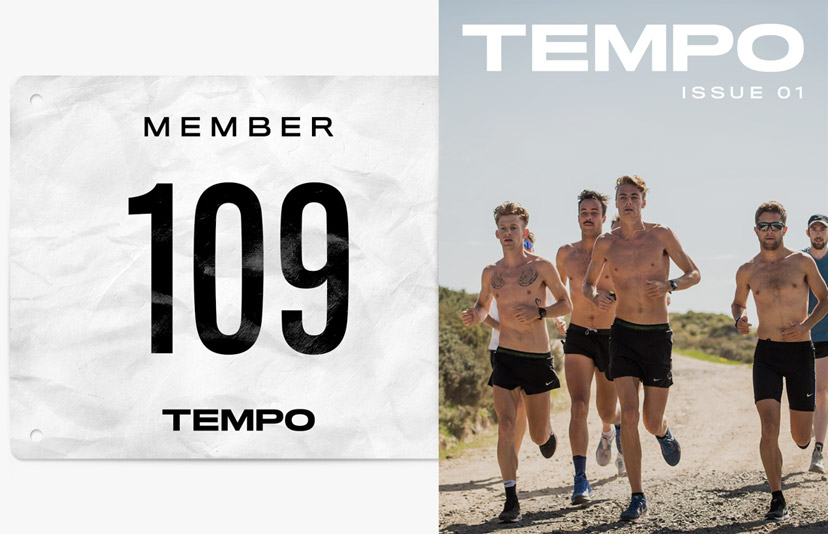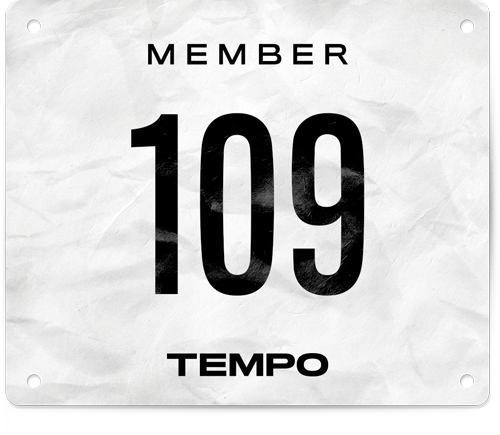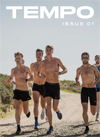Culture
Life in Full Colour
240km at the Coast to Kosciuszko with Michaela McDonald
Editor's Note: The 240km Coast to Kosciuszko took place in southern New South Wales - starting in Eden and finishing at Mt Kosciuszko. We acknowledge and pay our respects to the traditional owners of the land we passed through while covering this race - the Yuin people in the area around Eden, and the Walgal and Ngarigo people in the Kosciuszko region.
They say a 100 mile race is life in a day - you experience it all over the course of such a distance. The highest highs, and the lowest lows. Nothing is permanent except impermanence itself. Feeling good? Wait 10 miles and see how you feel. Feel bad? Stick it out 10 more miles and see how you feel.
If a 100 mile race is life in a day, Coast 2 Kosci (C2K) includes the afterlife. At 240km (150 miles), it’s one of the largest recognised single stage races in Australia.
We live in a time where even the most extreme events and distances are normalised - very few things can shock us now. Decades ago, marathons were for serious, committed, year-round runners only. Now we see an increasing number of occasional joggers sign up for a marathon - not necessarily to chip away at PR’s or master the craft, but to tick it off a ‘bucket list’. The same can be said for ultra marathons - marathoners looking for the next thing, the next rush, the thing that keeps them at the outer limits of the community's understanding of endurance.
2020 has seen a number of mind-bending displays of endurance. ‘Backyard’ ultra’s, hotel room marathons, and more. All of this leads us to think a 50km race is just 8km longer than a marathon, and a 100km race is just two 50’s, and so on. It all becomes normal. Except it isn’t normal at all - there’s nothing unremarkable about ultra long distance running. And that is why at 5:15am on a Friday morning in December I’m standing on a beach in the southern New South Wales town of Eden - a small whaling village 500km south of Sydney. Around me are a couple of hundred other people all gathered for the same purpose - to see the starters take off for the C2K.
To say this is a grass roots event would be understating it. It exists in the fringes - few ultra runners are even aware of it, and saying “I’m going to Coast 2 Kosci” to someone will always prompt follow up questions. There’s no social media promotion (organizers created an Instagram account the day before this year's race), the entry process is more likely to deny than accept runners, and the event has no sponsors. All of this is not to say the event is poorly run - the safety of participants is clearly the priority; something that becomes no small feat when the course has long stretches of highway running in the midnight hours.
My assignment for C2K is to track Michaela McDonald - a Sydney based ultrarunner who may be known to some TEMPO readers as a member of our 2019 team for The Speed Project. Michaela goes into the race as one of the younger competitors - a lot of the repeat finishers of this race could be best described (and affectionately known) as ‘tough old bastards’. Michaela is no novice when it comes to long distances, but with her longest ever race being a 100 miler, it still leaves 80 kilometers of unknown territory.
"C2K was always my dream race because it is a pure test of mental resilience. I knew I’d be able to get physically fit enough to complete the distance but I was unsure whether I would have the mind set to match."
Michaela McDonald
The race starts with a run off the beach, and just like that, the crowds disperse. After leaving the beach, we head up the road (‘we’ being my wife and I - my wife playing the role of driver and navigator) and find a nice spot for some photos, and I wait. Parked on a snaking dirt road out of Eden, much of the first 12km of this run is uphill. I guess there’s no such thing as easing into a 240km race. The sun is peeking through the trees - what’s left of them anyway, as this whole area was decimated by the fires last summer. And while this is a pretty rough gravel road, it’s also a main thoroughfare - the sounds of sunrise in the Australian bush punctured every few minutes by early 2000’s hatchbacks and utes taking racing lines around corners, obviously late to get to god-knows-where.
The first major checkpoint comes around 25km into the race, in a small (like, real small) town called Towamba. The local primary school puts on a tuck shop for the day - their biggest fundraising day of the year, and race crews, friends and family descend on it like seagulls on a chip (I went for muesli with locally grown fruit and yoghurt, and a slice of butter cake for later - about 4 minutes later, as it turned out).
We’re a couple of hours in by now, and even though it’s only approaching 8am, the sun has some bite in it - you just know it’s going to be a warm one. Towamba offers racers the first real chance to use their support crews - whether for fuelling, sunscreen, change of gear, or whatever else they may need. Energy levels were high, but the first real test of the day was still 25km up the road.
The day rolls on somewhat uneventfully (for me, in an airconditioned car with an almighty bag of snacks) as we approach the first marked climb of the race. The curiously named ‘Big Jack Mountain’, in cycling parlance a Category 2 Climb of around 7km on a steep and winding gravel road. Racers are allowed to have a pacer/crew member with them up this climb, but then must carry on solo until 8pm (Michaela reaches the crest of Big Jack just after lunch).
After 8 hours, Michaela reaches the town of Cathcart - home to the first open store on the race route. The sun is belting us around by now, and the freezers at the Cathcart General Store are full of gold - Magnum, Cornetto, Bubble o’ Bill, they’ve got it all. Because I’m an infant, I choose a chocolate Drumstick - something about being able to eat the whole thing as opposed to being left with a small, inedible wooden stick at the end. Smarter people than me choose a Calippo (which also fits my criteria of being stickless), and as I stand outside the store eating dairy on a hot day, I realise I’ve made a poor choice.
Anyway, Michaela is greeted in Cathcart by Tim, who is here as her support crew and also maintains his normal role as boyfriend. After a quick Calippo hand-off, Michaela is on her way again, with just a few hours of dirt roads standing between her and the 100km point of the race - not even halfway.
“Fuck it’s hot, and there are so many dead snakes on this road.”
That’s Michaela as she runs past me while I lay on my stomach on the gravel to take a photo. I get up very quickly, and vow not to lay on the road again today.
A few kilometers later while Michaela runs down a hill near Black Lake, a grain-carrying Kenworth bears down upon her and for more than a few moments I’ve got my heart in my mouth. I’m hundreds of metres away, barely visible amongst some bushes. There’s nothing I can do but hope the truck driver sees her and has enough control over his vehicle on the gravel to pass safely.
After a few tense moments, it’s clear he is able to take a wide path around her (although opts against slowing down). It gets me thinking about the night ahead.
"The heat was oppressive and had worn me down slowly over the course of the day but I’d made a deal with myself that once the afternoon and evening presented, I’d get to work. I spent the early evening hours working myself into a state where I was ready to start moving through the field."
Michaela McDonald
At 6pm, just over 12 hours into the race, a familiar pattern has emerged. I see the same support cars and the same runners as we leap frog rest stops and checkpoints. Without knowing the names of any competitors, we make do with nicknames - there goes ‘bucket hat’, here comes ‘shirtsy’, and for the guy who had his teenage kids crewing for him - ‘dad’. We park on a crest amongst the Boco Rock Wind Farm - I expect to see Michaela rolling through right on sunset and it’s coincidentally close to being halfway. As I sit and wait, I see the leading male competitors come through - some look fresh, some look like they’ve been to war. As I tick off the field in my mind as they run past, I notice a bunch of people out of order, and others not coming through at all. Just then, Tim pulls up in his support car and immediately starts sifting through the various tubs of different items he has packed. Michaela is close. By my count she’s now in 18th position overall, and 4th woman.
Seeing the shot I’m setting up for, Tim moves his car another 100m down the road so Michaela will have to keep running past me instead of stopping to get fuel, which allows me to get what I need.
Nightfall brings us to the historic town of Dalgety, on the banks of the Snowy River. Back in 1903 it was the favoured candidate to be the national capital - I’m guessing until someone actually went there and cooler heads prevailed. Nowadays it houses a pub (I can’t believe I’m saying this, but get the prawn and calamari pasta), and some truly boisterous locals.
Dalgety was also the prime opportunity to get some rest. Parking in a quiet area away from the road, we spent a frustrating few hours staring at the ceiling of our car while mozzies taunted us from all sides.
Rejoining the race in the early hours, Michaela has continued her climb up the order. In a 36km stretch from 148km to 184km, she went from 17th in the field to 11th - in the middle of the night. Tim also pulled a mighty stint - after crewing Michaela (solo) for the first 15 hours of the race, he jumped out and paced her for the next 7 hours, before taking a well deserved break in Jindabyne.
As Tim hangs behind to take a 45 minute nap and a hot shower, the road out of Jindabyne tilts upward - the bulk of the last 60 kilometres of this race are spent climbing to the top of Mt. Kosciuszko.
"Crewing for Mic was the easiest job in the world, Mic wanted to be there and that made the process so enjoyable. Pacing was just an extension of that, and seeing Mic running through the field at night is something I'll always remember."
Tim Locke
While this is my first C2K, it’s not my first time being around events that go for 24 hours or more, so I know the sunrise of a new day will bring fresh energy, optimism, and general good spirits. Sure enough, as I’m making a coffee on the side of the road next to Michaela’s support car, the mood is outright jovial. ‘She’s only got 40km to go!’ we say - not taking into account the 200km she has already travelled, or the climbing, or the elevation, or just the general idea that 40km is still a very long way.
The early morning sun floods the mountain, and there’s something about the way the light hits the surface of the road. It’s stunning. And while I’m admiring the curves of the road, Michaela and Jess (Michaela’s 2nd crew member) come into view. A moment later, Michaela is at the car refueling once again - a small tub of potatoes, washed down with a Red Bull. I’m loathe to quote Tim Rossi’s favourite author, John L. Parker Jr, but the saying feels particularly relevant now - if the furnace is hot enough, anything will burn.
"The aim of the game when it comes to fuelling for these events is get in anything and everything, whenever you can. That meant gels, Red Bull, Coke, potatoes and a few pikelets.
At this stage, just trying to stay awake put me into a calorie deficit let alone trying to move forward at a respectable pace."
Michaela McDonald
From here, it’s all uphill to the finish, and starts to get more exposed as Michaela passes the Perisher Ski Resort. It’s a clear morning, but predictably windy and exposed as the tree cover disappears.
I join Michaela and her support team at Charlotte’s Pass - the highest driveable point of the course. From here, Michaela has a 9km trip to the summit of Mt Kosciuszko, before turning and coming back to Charlotte’s Pass for the finish. So really, we’re at the finish line now, but must complete a final 18km loop before stopping the clock.
The trip up the mountain is one Red Bull can after another, the whole support crew emptying pockets and packs to see what remnants of nutrition they have left to offer. As we ascend, we cross paths with a couple of other competitors coming back down, only a handful of kilometers from the finish line. Conditions on the way up are truly awful - wind gusts strong enough to knock us into each other, and forcing us to walk or jog hunched over, head down, just to try and cut through the headwind. As is bound to happen after almost 30 hours of being on your feet, Michaela was starting to get a little testy at where Tim chose to walk.
"We were trying to form a Breaking 2 arrowhead to shelter Mic from the wind when I realised my foot strike was covering Mic in dust and kicking rocks into her shoes. This was not helpful."
The summit is somewhat anticlimactic - it’s not the finish line, and it’s too packed with tourists to offer any moment for quiet reflection or celebration. Instead it’s a quick photo and back down, now less than 9km remaining in a race that started almost 30 hours earlier.
I head down toward the finish line in front of Michaela and her team, wanting to make sure I can get a finish line shot. As I stand waiting for Michaela to cross the line, I reflect on everything I’ve seen and been part of over the last 30 hours.
Races of this distance are revered for good reason. They’re incredibly challenging, obviously - but the enormity of the physical task is dwarfed by the mental fortitude one needs to be able to complete it. The sheer length of this race means that if you’ve gone out too hard, you have time to correct. If you’re in a slump, you have time to get yourself out of it. If you’re tired, you can rest. Physically, it’s hard but can be conquered.
Mentally, it’s something I struggle to comprehend, even after seeing it - like magic. How do you apply yourself to a task so great, and so unknown, over such a long period of time? Through the cold and the heat and the light and the dark, and harsh Australian conditions that are at best uncomfortable.
I didn’t walk away from C2K with an itch to enter ultra’s myself, but I am reminded of how incredible some people are. Not simply for what they can do, but for what they’ve trained themselves to be able to do.
Michaela finished the race in a time of 31 hours and 14 minutes, placing her 7th overall, and 4th female.


